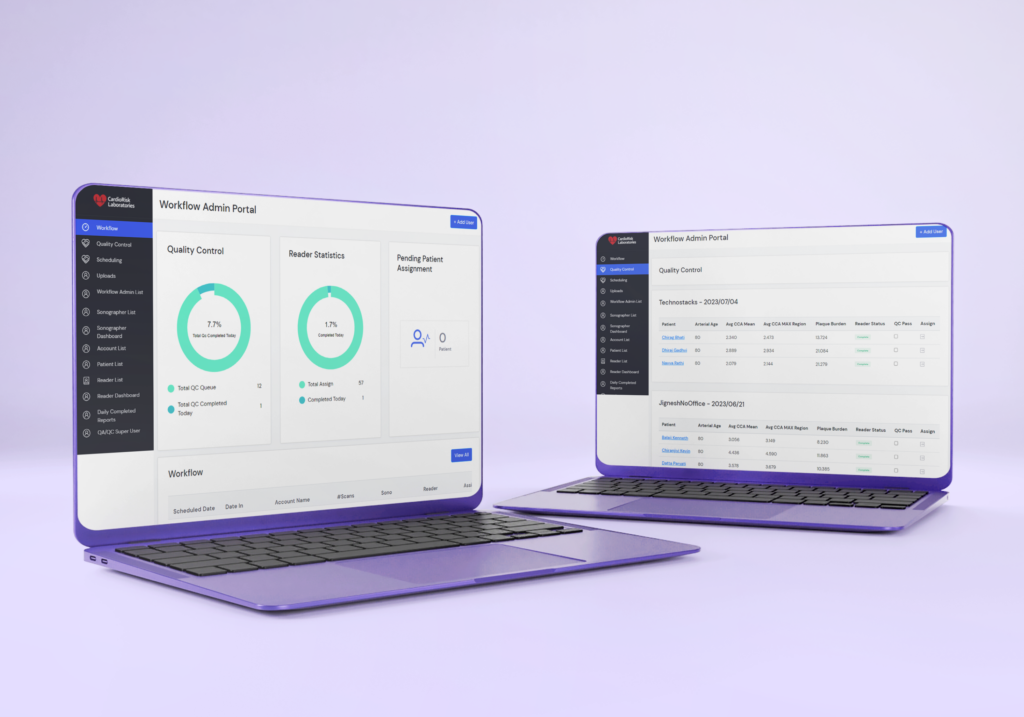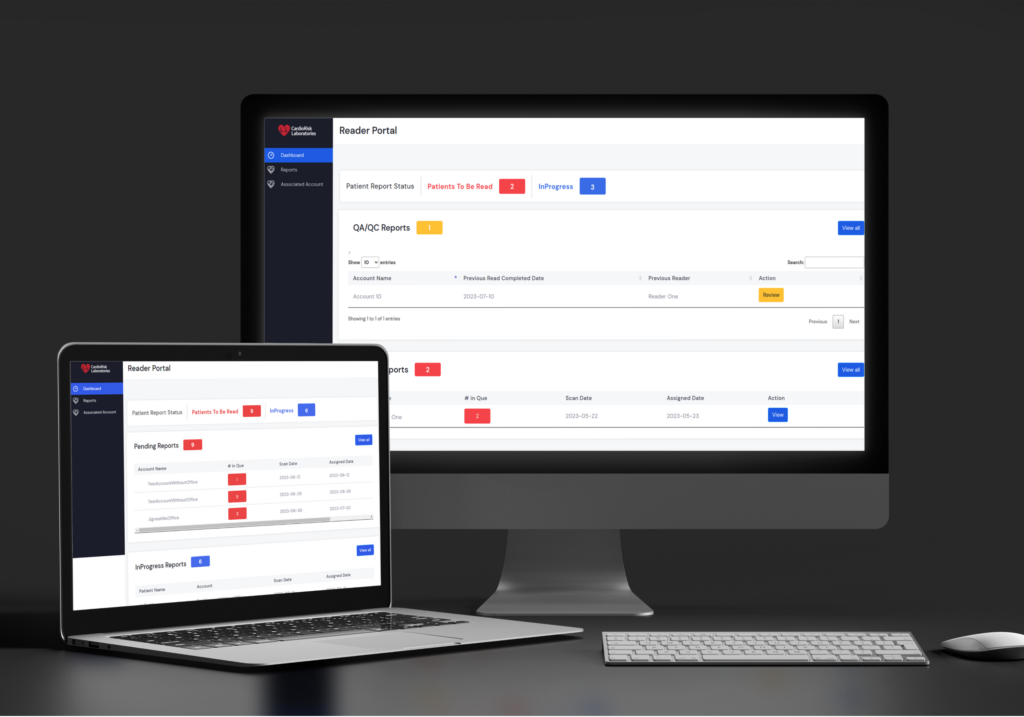What sparked the creation of a well-being platform?
Our client was facing a major challenge in managing different activities related to ultrasonic image reading and reporting before implementing our web-based Ultrasonic Image Reading tool.
For example, existing manual processes posed challenges in being able to schedule sonographers, upload and assign images, quality control (QC) processes, generate PDF reports, as well as maintain patient and report history for comparison.
These challenges not only introduce inefficiencies and delays but also increase the risks of errors in the diagnostic process. Understanding the need to reduce manual dependence and improve operational usability and compatibility, we have developed a state-of-the-art solution that revolutionizes the way ultrasonic images are managed and interpreted.
A web-based tool assists in meeting these challenges head-on, streamlining workflows, and improving accuracy to smooth the process of collaboration amongst healthcare professionals resulting in enhanced patient care.
Our approach to fostering the solution
Some of the major objectives of our web-based Ultrasonic Image Reading tool which was designed to rectify the challenges faced by our client in managing ultrasonic image reading and reporting. Our solution eases the handling of ultrasonic images as it reduces the manual process, improves usability, and enhances the compatibility of the tool across operations.
Our tool assists healthcare providers to easily sign up sonographers and makes it streamlined for availabilities for conducting patient scans. Our automated feature of reading uploads and assignments eliminates errors and saves time lost on that. The quality control module is robust and promises in-depth verification of readings, improving the accuracy of final reports.
Our solution automatizes the report PDF generational process removing labourers from manual efforts for prompt delivery to patients and the account office. Centralized patient and report history management allows easy access and comparison of current and older reports for better monitoring of disease progression.
An annotation feature helps doctors design lines over ultrasonic images that help in the diagnosis of plaque on client-defined criteria. This improves accuracy and uniformity in the diagnosis of plaque.
Our Ultrasonic Image Reading tool through implementation revolutionizes the workflow in any client’s business through our web-based offering. It gets rid of manual processes, thus reducing errors and delays. Enhanced usability and compatibility across operations fostering smooth collaboration among healthcare professionals leading to faster and more informed decision-making. Ultimately, our solution empowers a healthcare provider to air accurate diagnoses while improving patients’ care and enhancing overall efficiency.

Outcomes
With the implementation of our web-based Ultrasonic Image Reading tool, the positive outcomes for our client include:
Improved Efficiency: Our tool significantly improves workflow efficiency by eliminating the manual processes and streamlining such items as scheduling, image uploading, and finally report generation. This allows healthcare providers to allocate resources in a more effective manner by providing for a more streamlined and overall productive operation so that during their work it saves time.
Enhanced Accuracy: A strong module for quality control ensures a systematic verification of the readings further leading to accuracy in diagnosing health conditions like arterial plaque. Associated with quality control, our tool increases credibility in the final reports because it reduces errors and inconsistencies that empowers healthcare professionals with accurate decisions.
Faster Report Delivery: Automating the generation of PDF reports ensures their prompt delivery to needy patients and account offices. This improves both – an enhanced patient experience and a time-leverage communication and decision-making process by healthcare professionals for timely interventions and treatments among one another.
Comprehensive Data Management: The centralization of the patient and report history managing system makes it easily comparable to accessing current reports with older ones. It helps healthcare providers in easily tracing the development and effects of the diseases as well as treatment, so that decisions for better health care of the patients may be made based on that historical data.
Improved Collaboration: Our tool enables better teamwork among the healthcare professionals by offering a common platform to the sonographers, readers (doctors), and admin staff. It facilitates smooth communication and access to the required information, thus ensuring teamwork and coordination in order to serve the patients better.

Conclusion
Our client’s workflow was revolutionized by the implementation of our Ultrasonic Image Reading tool based on the web. It allowed them an increase accuracy, elevate efficiency, enable holistic data management by removing manual steps elevate patient care, and make operations optimal. The successful implementation of our tool speaks volumes about its potential to bring about a revolution in the area of medical diagnostics and outcomes at the ultrasonic image reading and reporting phase.
